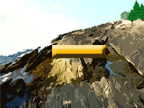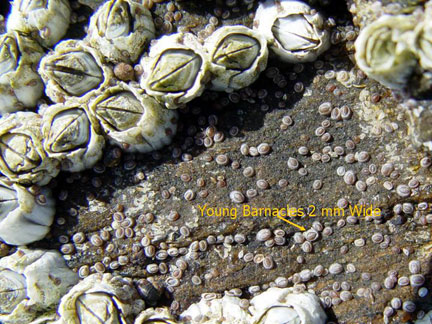 |
 |
|||||||||||||||
|
The barnacle will brood its eggs after fertilzation in its mantle cavity or internal shell space. The eggs are protected from predators during this time. When they are ready to hatch the barnacle opens its shell and releases the nauplius (nah-plee-us) larvae into the currents. This is the one time in the barnacle's life when it looks like a crustacean,sporting antenna, an eye spot, jointed appendages, and a shield like body. As the nauplius develops, it molts or sheds like a true crustacean and begins seeking out a suitable place to settle. At this stage we call it a cyprid (si-prid) larvae. Cyprids have chemical and touch detectors that can recognize adults of its own species and suitable rocky environments. When everything is right, the cyprid larvae uses special cement glands in its antennae to attach itself to the rock. It begins secreting the material to make its shell "house." Barnacles in the lower intertidal regions rarely live more than two years as they are crowded out by blue mussels or eaten by their primary predator, the dog whelk. |
||||||||||||||||
|
||||||||||||||||
|
||||||||||||||||


